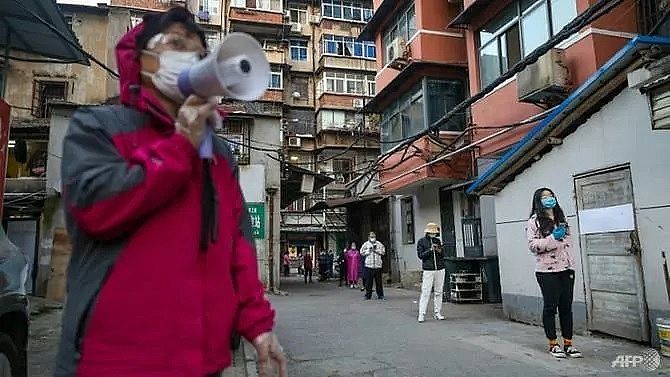COVID-19: Wuhan partially reopens from months-long isolation

Crowds of passengers arrived at Wuhan train station on Saturday as the Chinese city of 11 million people that was Ground Zero for what became the global coronavirus pandemic, partially re-opened after more than two months of isolation.
Wuhan was placed under lockdown in January with residents forbidden to leave, roadblocks ring-fencing the city's outskirts and drastic restrictions on daily life.
But signalling the end of its long isolation, the first officially sanctioned passenger train arrived back into the city just after midnight.
"It almost feels like returning to an alien land, because I haven't been back for more than two months. So I really want to take a look," says Gao Xuesong, a worker in Wuhan's auto industry.
China is now battling to control a wave of imported cases as infections soar abroad.
People are now allowed to enter the city but not leave, and many trains had been fully booked days in advance.
As passengers lined up to exit the station, workers in hazmat suits call for anyone returning from overseas to come forward.
All arrivals in Wuhan have to show a green code on a mobile app to prove that they are healthy.
Passengers in Shanghai had their temperatures checked by staff in goggles and masks after boarding their Saturday morning service.
Restrictions on residents heading out of Wuhan will not be lifted until April 8, when the airport will also reopen for domestic flights.
Wuhan is the last area of Hubei province to see overland travel restrictions lifted, although some highways leading into the city had already reopened.
Freight train services resume
China-Europe freight train services also resumed allowing more goods such as medical supplies and daily necessities to flow more efficiently between the two regions.
On Saturday morning, the X8015/6 rail carrying 50 cargo containers left the Wuhan station en route to reach Duisburg, Germany in 15 days.
The first freight train of its kind to leave Wuhan after the COVID-19 outbreak began, it carried locally produced cargo, including 166.4 metric tons of medical supplies such as medical fabrics.
There were also auto parts, electronics and telecommunication cables on the train, and all these goods would aid in pandemic control and construction projects in European countries such as Germany, France, Hungry, the Czech Republic and Poland.
"Epidemic free" communities
Wuhan has rated the number of communities as "epidemic free", enabling their residents to carry on life as normal.
"We will soon be back to work. Now we can come and go freely as our community has been rated as epidemic free, for example going out for shopping or other outdoor activities," said one local resident.
Most of Wuhan's subway network will restart on Saturday, and some shopping centres will open their doors next week.
A study this week found that the lockdown in Wuhan succeeded in stopping the fast-spreading virus in its tracks and gave health care facilities crucial breathing room, but it warned against opening up the city too soon.
Liu Dongru, of the Hubei Health Commission, said that although Wuhan had been reclassified as a "low-risk" area, work to control the virus must continue.
"Zero reported cases does not equal zero risk," he said.
"We have even more of a responsibility to do prevention and control work, with increased difficulty.









